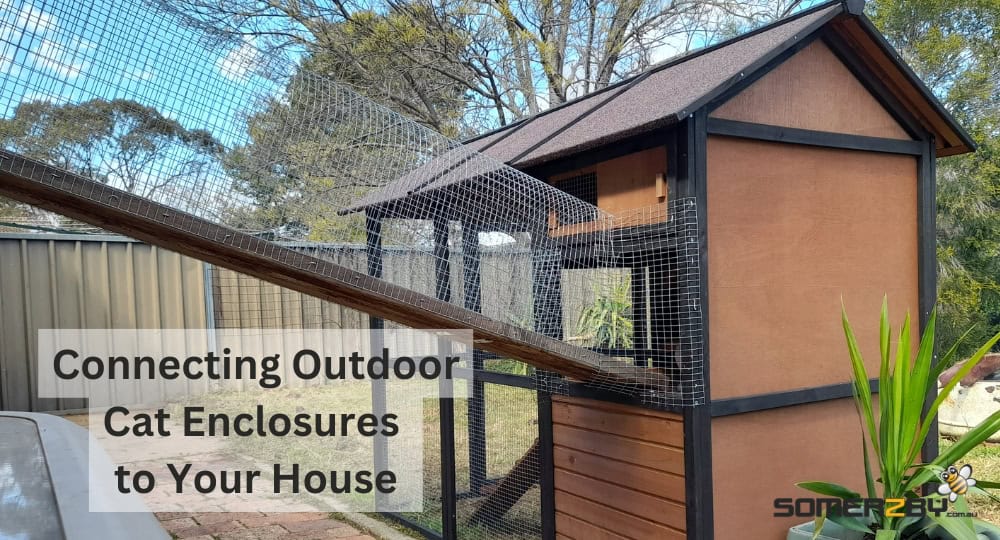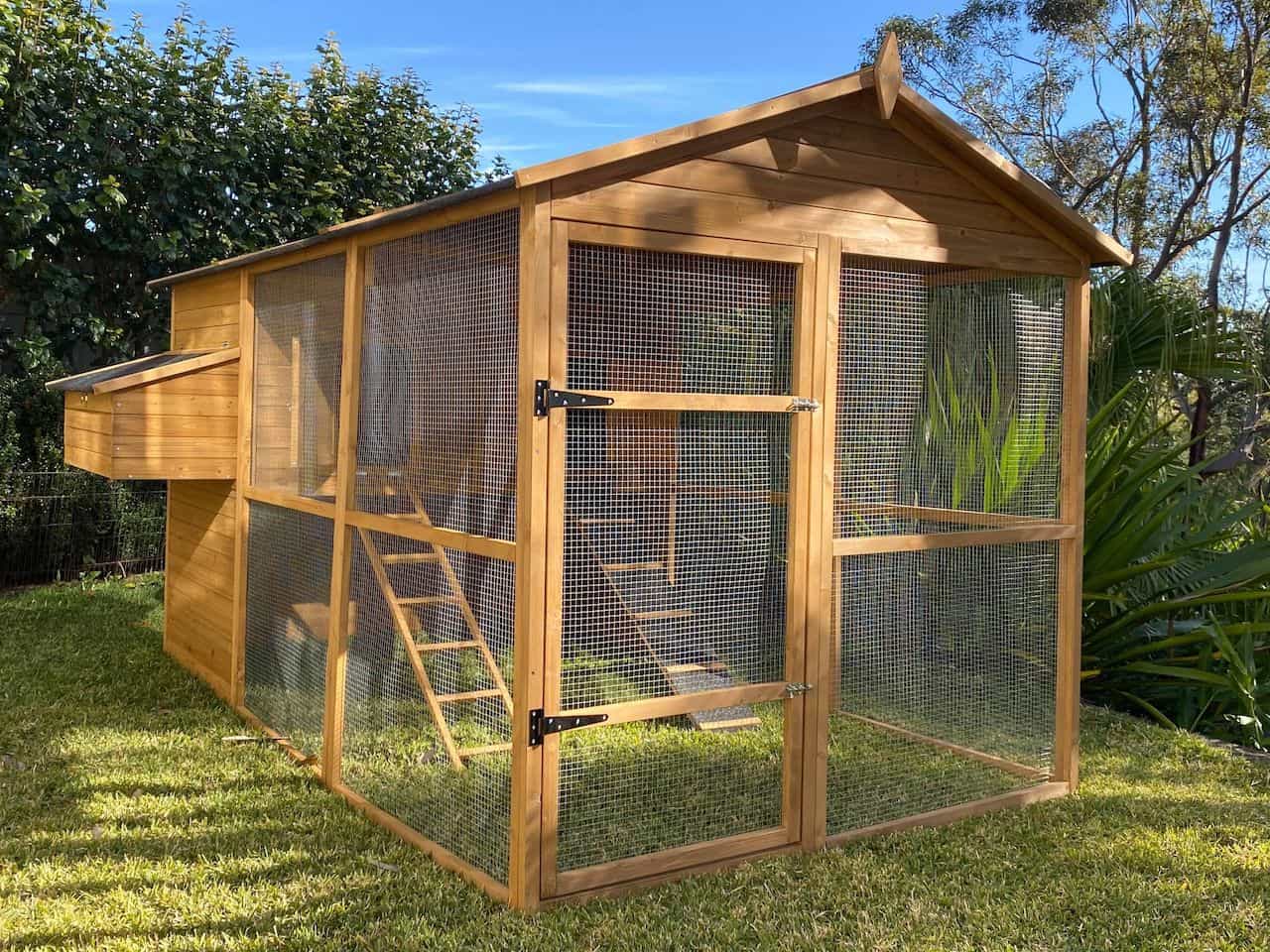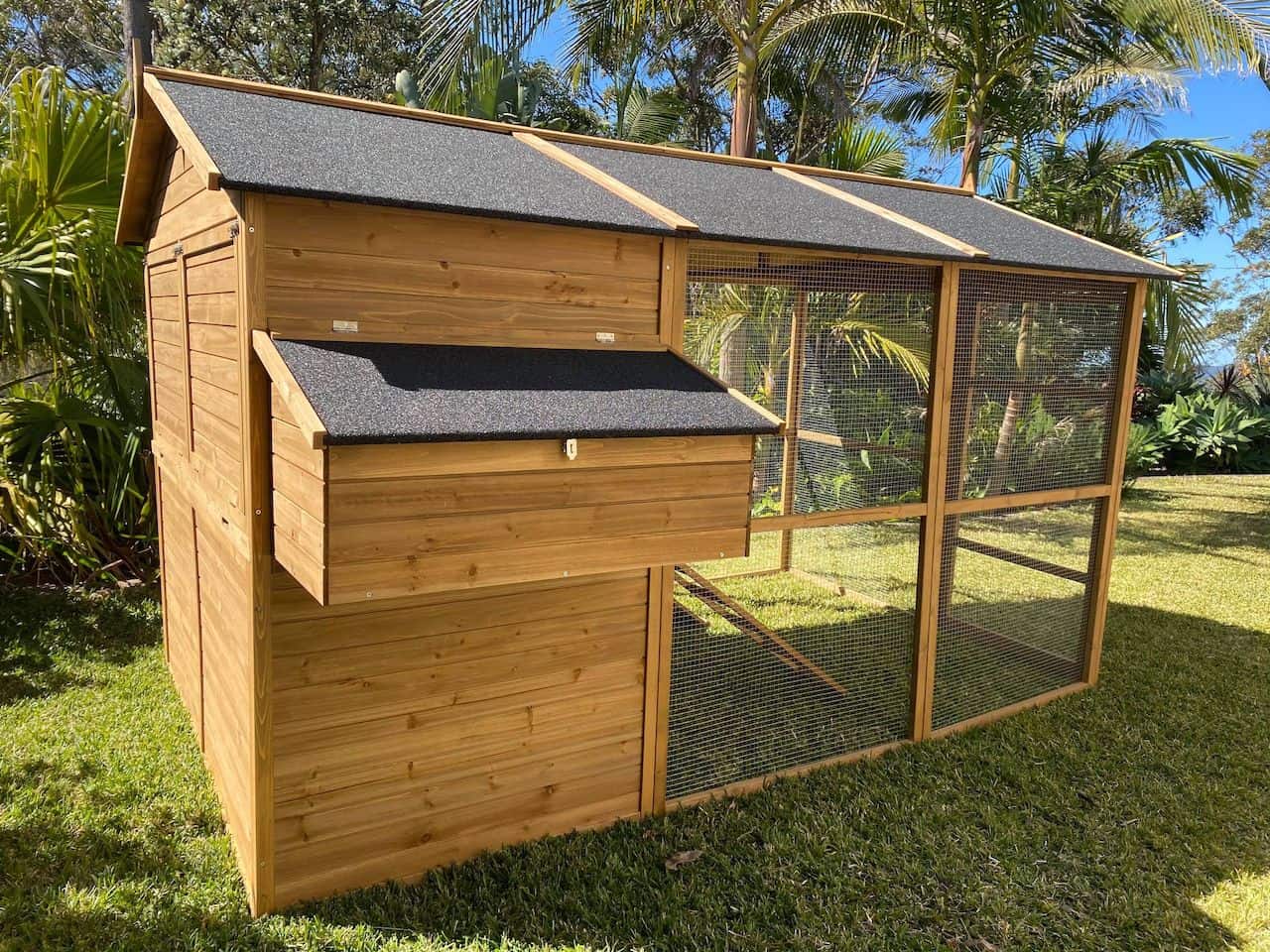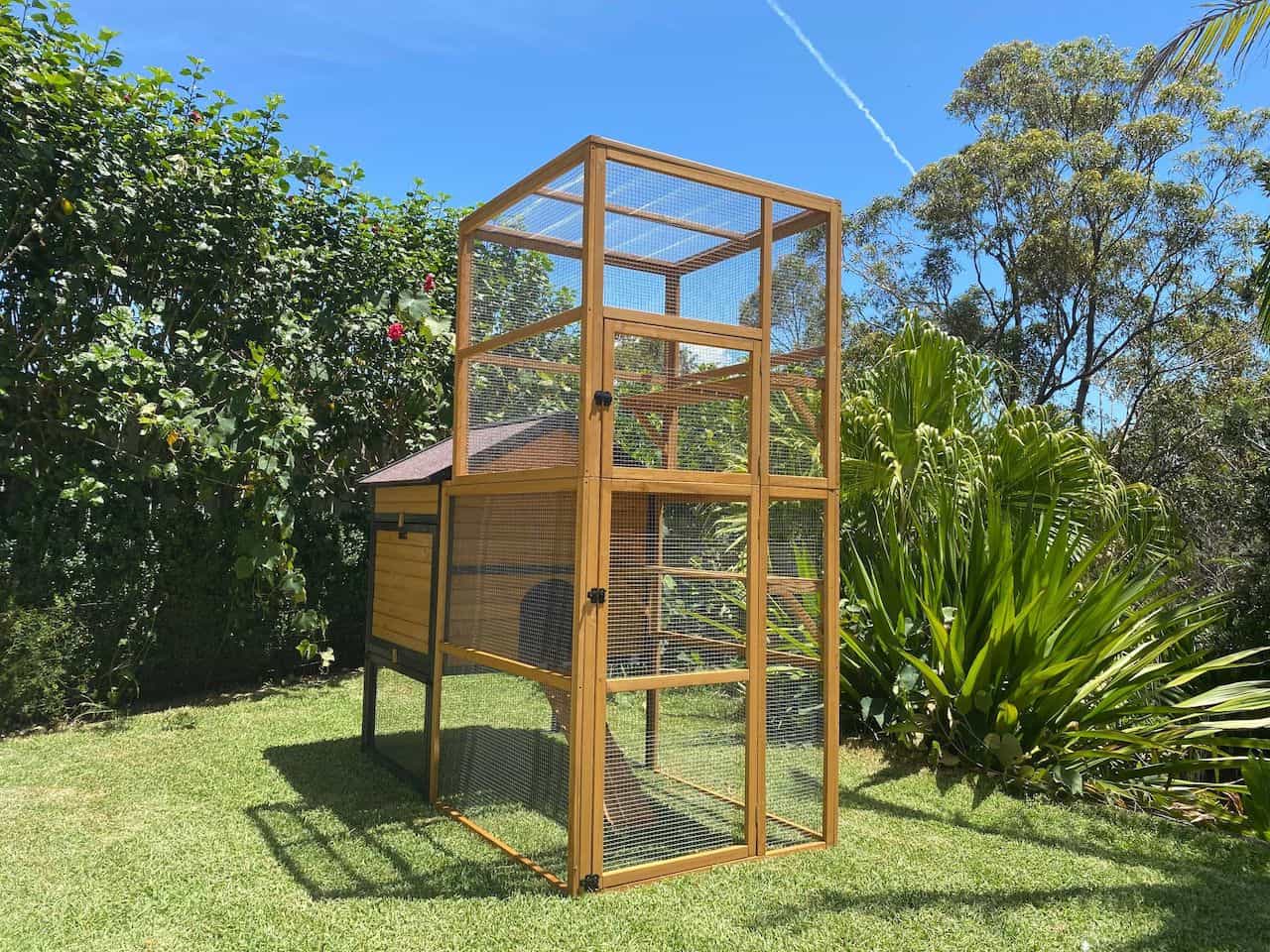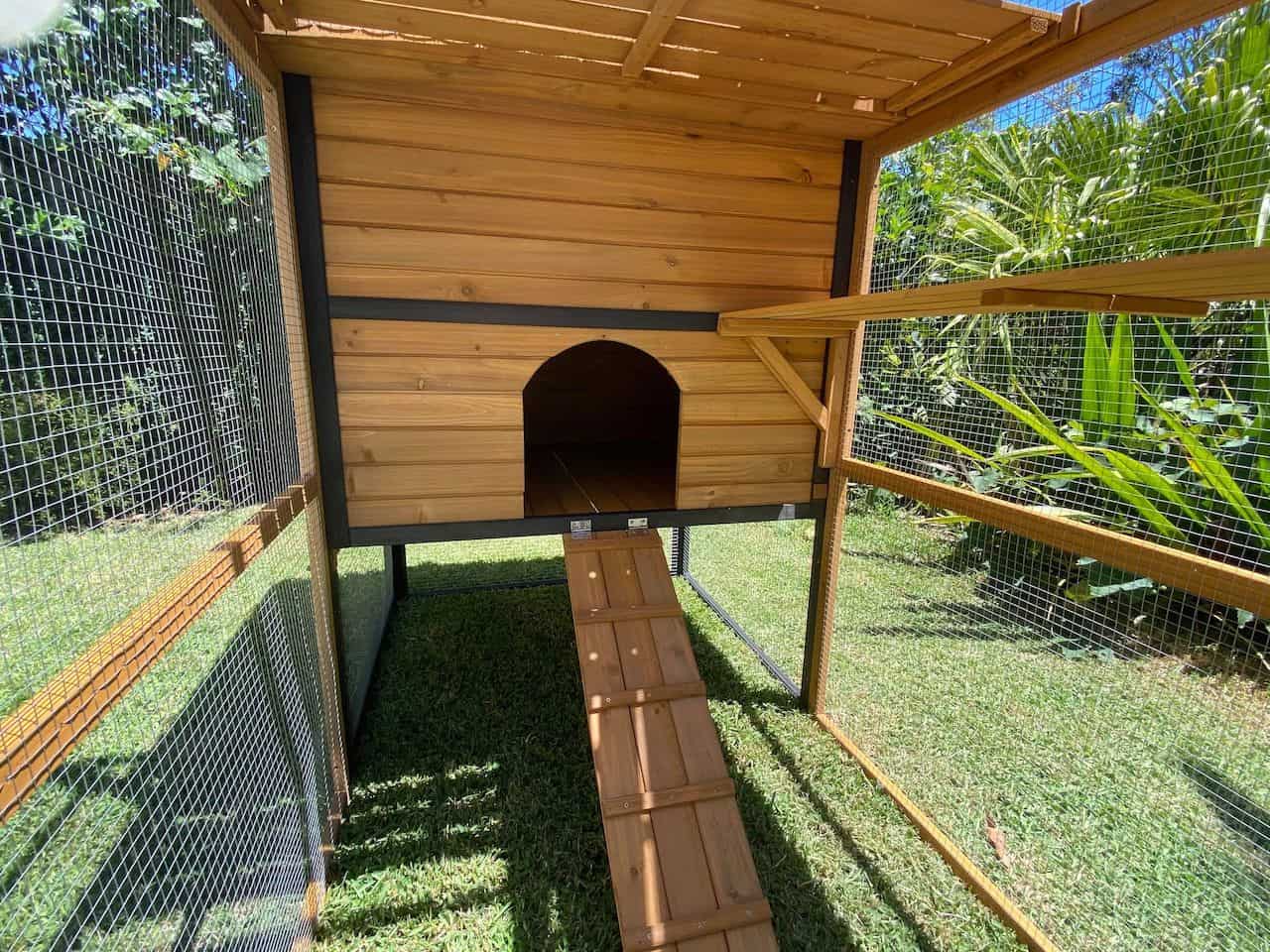Cats, Info Guides
Connecting Outdoor Cat Enclosures to Your House
Creating outdoor cat enclosures connected to houses is an excellent way to provide a safe and enriching environment for your feline friends.
In this blog post, we will explore various aspects of designing and constructing these unique spaces that seamlessly blend indoor and outdoor living areas.
Choosing the perfect spot for combining indoor and outdoor areas, as well as determining an appropriate size of the interior area are key elements when creating an enclosure that links to your house.
We will also delve into recommended designs and materials for building your large cat enclosure.
Additionally, we’ll share tips on incorporating features such as scratching posts and shelves in creative ways while ensuring safety & comfort within these connected spaces.
To finish, we’ll provide examples of successful indoor-outdoor connections to help you create a safe and comfortable haven for your cats.
By following our expert advice on creating outdoor cat enclosures connected to houses, you can offer your pets a secure haven where they can enjoy fresh air, exercise their natural instincts, and live happier lives overall.
- Creating a Dedicated Indoor Space for Your Cat
- Choosing the Ideal Location for Connecting Indoor and Outdoor Spaces
- Determining the Appropriate Size of the Dedicated Indoor Area
- Recommended Designs and Materials for Indoor Cat Enclosures
- Incorporating Features into Your Cat Enclosure
- Ensuring Safety & Comfort in Your Connected Spaces
- Real-Life Examples of Successful Indoor-Outdoor Connections
- FAQ
- Conclusion
Creating a Dedicated Indoor Space for Your Cat
Providing your cat with a dedicated indoor space that connects seamlessly to their outdoor enclosure is essential for ensuring they can enjoy the best of both worlds.
By considering factors such as location, size, and access points, you can create an environment where your cat can easily move between their indoor sanctuary and outdoor playground.
Choosing the Ideal Location for Connecting Indoor and Outdoor Spaces
Selecting the right location within your home is crucial when creating an interconnected space. Consider areas close to windows or doors that lead directly outside so that it’s easy to connect outdoor cat enclosures. Ideally, choose a room with ample natural light and ventilation to promote overall well-being.
Determining the Appropriate Size of the Dedicated Indoor Area
The amount of space you possess in your home should be the basis for selecting the size of your dedicated indoor area.
It’s important not to overcrowd this area but ensure there’s enough room for features like scratching posts, perches, hiding places, as well as comfortable resting spots.
Keep in mind that larger spaces may require additional heating or cooling solutions during extreme weather conditions.
Connecting Your Home with Somerzby Enclosure Products
- Somerzby Homestead Extra Large Enclosure: This spacious wooden enclosure provides plenty of room for cats while being made from eco-friendly materials suitable for connecting indoors and outdoors.
- Bella Cat Tunnel Kit: The Bella Cat Tunnel Kit is an excellent option for creating a secure connection between your home and outdoor enclosure. This modular tunnel system can be customised to fit any space, allowing your cat easy access to their catio spaces while keeping them safe from potential hazards outside.
By incorporating these considerations into the layout of your indoor-outdoor connected space, you can create a secure and stimulating area for both you and your cat to spend time in together.
By selecting the right location, size, and using high-quality products like those offered by Somerzby, you’ll create a sanctuary where both you and your cat can enjoy spending time together in safety.
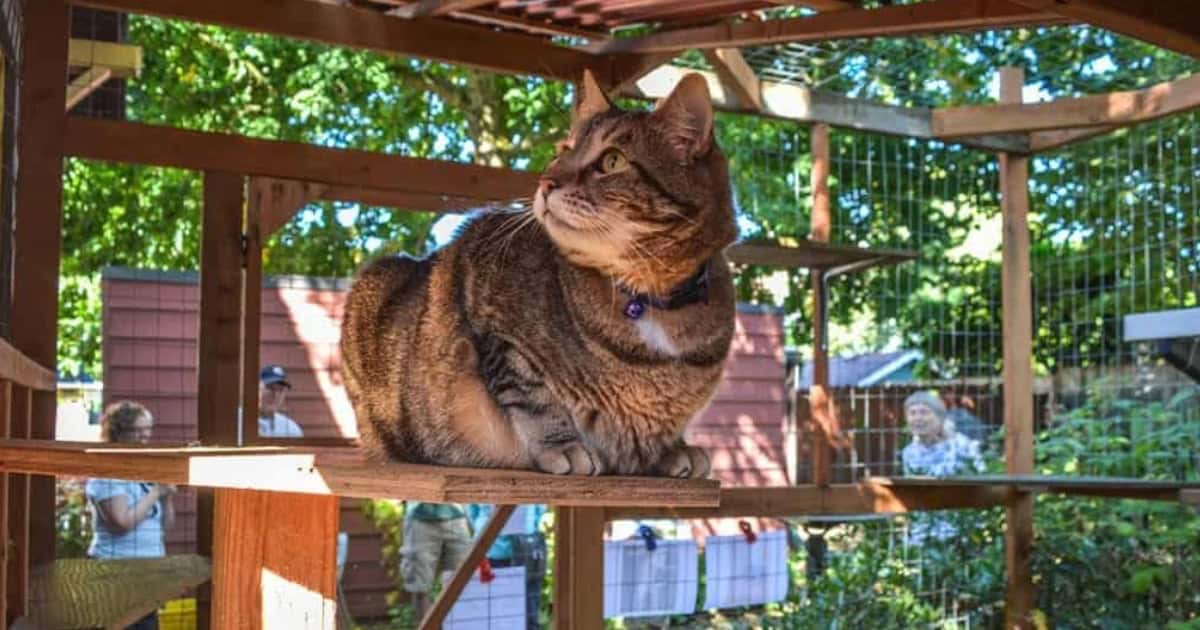
Recommended Designs and Materials for Indoor Cat Enclosures
When it comes to designing a comfortable and secure connection between your home and your cat’s outdoor enclosure, there are several factors to consider.
Choosing the right materials and designs can ensure that your feline friend has an enjoyable experience while remaining safe in their environment.
Types of materials commonly used in building enclosures
- Wood: Wooden enclosures like the Somerzby Homestead, provide a natural look that blends well with most houses. Opt for untreated or non-toxic treated wood to avoid any potential health risks.
- Metal: Metal frames offer durability, strength, and easy maintenance. They can be combined with mesh or wire panels to create a sturdy yet breathable space for your cat.
- PVC: PVC is lightweight, weather-resistant, and easy to clean. It can be used as framing material or incorporated into modular systems of cat enclosures.
Design considerations based on available space
If you’re short on floor space but have plenty of height, contemplate crafting multi-level platforms with shelves or perches to let your cats climb up high without taking up too much area. Here are some ideas based on different spatial constraints:
- If you have limited floor space but ample vertical room, consider creating multi-level platforms using shelves or perches so that cats can climb up high without occupying too much ground area.
- For homes with a spare room or unused corner, you can create an entire dedicated space for your cat by installing a door or window access point that connects to their outdoor enclosure. The Somerzby Bella Cat Tunnel Kit is an excellent option for this purpose.
- In cases where direct connection between indoor and outdoor spaces isn’t feasible, consider using portable tunnels to provide temporary access when needed.
When making your selection, ensure that the materials and designs are appropriate for your particular requirements to create a smooth transition between indoor areas and outdoor cat enclosures.
This not only provides maximum enjoyment for your feline friend but also adds value to your home environment as well.
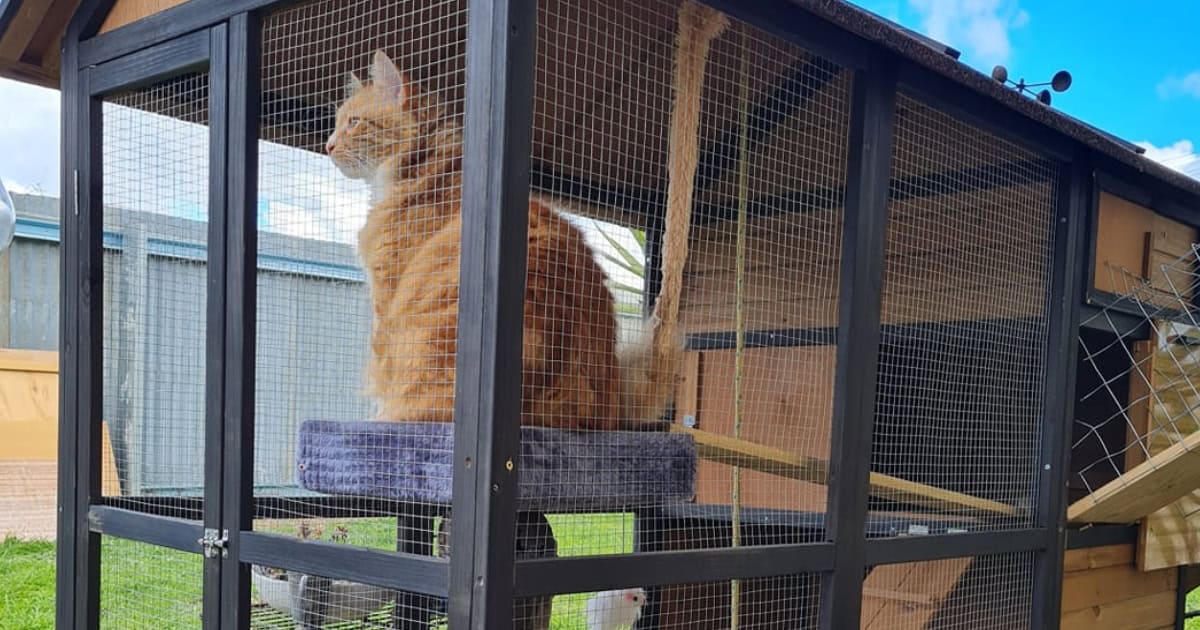
Incorporating Features into Your Cat Enclosure
Ensure maximum enjoyment for your feline friend by incorporating features such as scratching posts, perches, and hiding places within both indoor areas connected to house enclosures.
This will provide ample opportunities for play, exercise, and rest while promoting overall well-being and happiness for your furry companion.
Selecting Suitable Scratching Post Materials
Scratching posts are essential in any cat enclosure to help maintain healthy claws and prevent unwanted scratching on furniture.
When choosing a material for the post, consider options like sisal rope or carpet that offer durability and resistance against wear-and-tear. You can shop the range of cat scratching posts offered by Somerzby here.
Ideas for Creative Perch Placement
Cats love observing their surroundings from an elevated position; therefore, including perches at various heights in the enclosure can encourage exploration and stimulate their curiosity.
Consider installing shelves or platforms on walls or fences of your cat house. Somerzby’s Heidi cat house includes shelves to offer multiple levels of fun.
Hiding Places: A Must-Have Feature in Any Catio Space
- Cardboard Boxes: Simple and affordable, cardboard boxes can be placed throughout the enclosure to provide a cosy hiding spot for your cat.
- Hollow Logs or Tunnels: These natural elements not only add visual interest but also create an exciting environment for your cat to explore.
- Cat Caves or Igloos: Specially designed cat caves offer a comfortable retreat where your feline friend can curl up and relax in privacy.
Incorporating these features into both indoor and outdoor spaces of your connected pet enclosures will keep your cats entertained, happy, and safe while they enjoy their new living space.
Remember that variety is key when designing the perfect catio space – so get creative with materials, placements, and structures.
Including features in your cat’s habitat is a key component of making sure it has a safe and comfy environment.
By carefully selecting the right materials, placing perches in creative locations, and adding protective barriers against potential wildlife threats, you can ensure that your connected spaces provide optimal safety and comfort for both you and your feline friend.
Next we will discuss how to maintain temperature control within these enclosed areas.
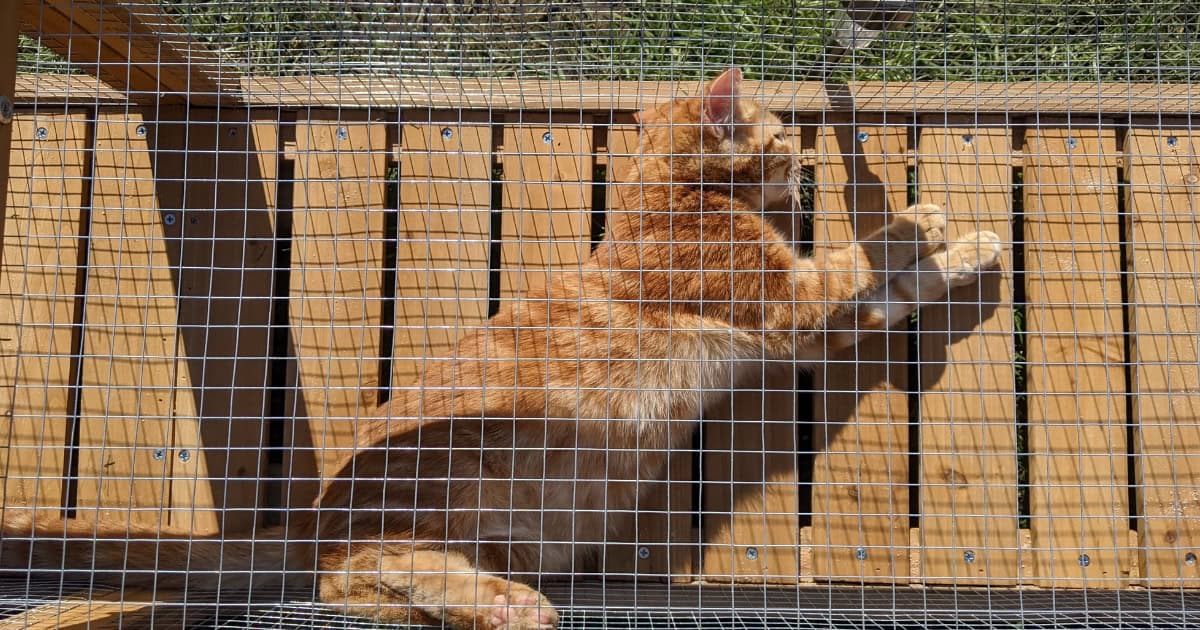
Ensuring Safety & Comfort in Your Connected Spaces
Prioritising safety and comfort when designing interconnected environments is essential for the well-being of your cat.
By making sure these spaces are free from hazards, offer cosy spots for relaxation, and provide appropriate temperature control, you can create a connected indoor-outdoor space that both you and your feline friend will love.
Adding Protective Barriers Against Wildlife Threats
To keep your cat safe from potential threats such as other animals or wildlife, consider installing protective barriers like fences.
Fencing systems help to prevent unwanted intruders while still allowing your cat to enjoy their outdoor time without feeling confined.
Additionally, ensure that any openings between the house and the enclosure are secure enough to prevent escape attempts by curious cats.
Tips on Maintaining Optimal Temperature Control
- Insulation: Proper insulation within the connecting area ensures that it remains comfortable during extreme weather conditions. Insulating materials like foam boards or fiberglass batts can be used effectively in walls and ceilings of enclosures.
- Ventilation: Providing adequate ventilation is crucial for maintaining fresh air circulation throughout the year. Consider installing vents or fans strategically placed around both indoor areas connected to house enclosures (e.g., windows) as well as within outdoor structures themselves. This helps regulate temperature and humidity levels inside while also reducing odours and allergen build-up over time.
- Sun protection: During hot summer days, it’s essential to provide shaded areas for your cat to rest and cool down. You can achieve this by incorporating natural shade from trees or installing sun shades within your cat house.
- Heating: In colder months, consider adding heating elements such as heated pads or blankets in the indoor space connected to the outdoor enclosure. This will help keep your cat warm and comfortable even when temperatures drop outside.
Incorporating these safety measures and temperature control strategies into your interconnected spaces ensures that both you and your feline friend can enjoy a secure, comfortable environment all year round.
With careful planning and attention to detail, you’ll create an indoor-outdoor sanctuary that meets all of your cat’s needs while providing them with endless opportunities for exploration, playtime, and relaxation.
By adding protective barriers and maintaining temperature control, pet owners can ensure their cats are safe and comfortable in connected outdoor enclosures.
Additionally, real-life examples of successful indoor-outdoor connections provide inspiration for creating the perfect space for your feline friend.
Real-Life Examples of Successful Indoor-Outdoor Connections
Here at Somerzby, we sell a great range of premium cat enclosures that will protect your kitty.
Somerzby Homestead
The Somerzby Homestead is a spacious and comfortable enclosure that boasts a large resting box, fir wood construction, and even has wood backing under the house area for plenty of weather protection.
The galvanised mesh wire protects your cats from pests and vermin. The metal pull-out tray is long lasting and easy to clean.
To seamlessly connect this enclosure to your house, consider combining it with the Somerzby Bella Cat Tunnel Kit.
Somerzby Stacey
The Stacey enclosure is a house and run that provides optimal protection and entertainment for your cats.
It has high up shelves that allow your cats to enjoy the view and a tall run area to satisfy your cats natural desire to rest up high. The internal space provides cosy protection from the weather.
Remember that no matter which design approach you choose for connecting an indoor area with an outside cat house, always prioritise safety, comfort, and well-being for both you and your furry companions.
Read our positive cat enclosure reviews from happy customers!
FAQ
Does a Catio have to be attached to the house?
No, a Catio does not necessarily need to be attached to the house.
While many cat owners prefer connecting their outdoor enclosures directly to their home for easy access, standalone Catios can also provide safe and stimulating environments for cats.
The key is ensuring proper safety measures and enrichment features are included in any design.
How do you attach a cat enclosure to a house?
To attach an outside cat enclosure to your house, first choose an appropriate location with easy indoor-outdoor access like windows or doors.
Next, use sturdy materials such as wood or metal framing and secure it firmly against the wall using brackets or other hardware. You can purchase premade tunnels like Somerzby Bella Cat Tunnel Kit.
Are outdoor enclosures good for cats?
Yes, outdoor enclosures offer numerous benefits for cats including mental stimulation, physical exercise opportunities, and exposure to fresh air while keeping them safe from potential dangers such as traffic accidents or predators.
However, it’s important that these spaces include essential features like climbing structures and comfortable resting areas.
What are the rules for cat enclosures?
The rules regarding cat enclosures vary depending on local regulations in your area.
Generally speaking though, they should be designed with adequate ventilation systems, constructed of durable materials, ensure no escape routes exist, incorporate snake-proofing measures if necessary, and provide enough space per animal according to weight guidelines by RSPCA Australia.
Conclusion
In conclusion, creating a dedicated indoor space for your cat can provide them with a safe and comfortable living environment that is connected to the outdoors.
When selecting the spot for your cat’s home, take into account ease of access between indoors and outdoors, in addition to proper air flow and temperature regulation.
Recommended designs and materials include wire mesh or screened-in cage options, while essential features such as climbing structures or multi-level platforms can be incorporated to make the space more enjoyable for your cat.
Ensuring safety measures such as snake-proofing in snake-prone areas or protective barriers above fences is also crucial.
Real-life examples of successful outdoor cat enclosures connected to houses, can inspire you when customising your own DIY enclosure.
If you’re looking for high-quality outdoor cat enclosures connected to the house, Somerzby offers a wide range of affordable pet enclosures designed specifically for cats.




